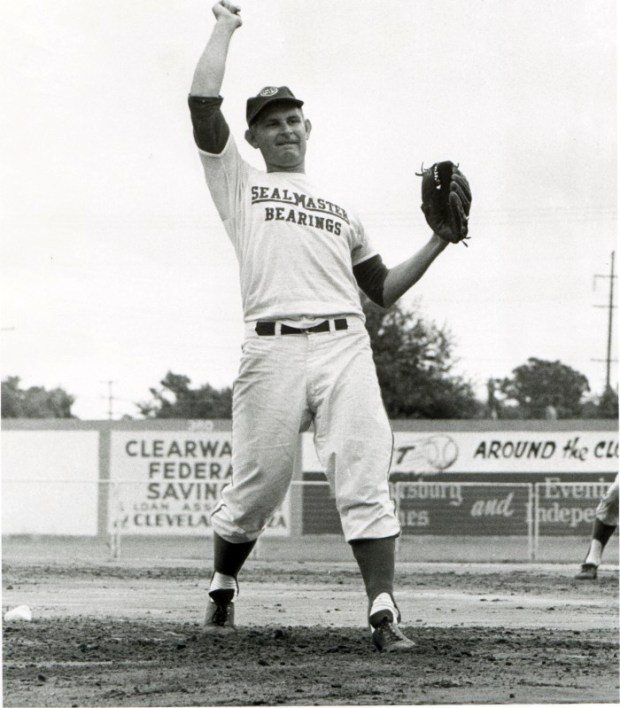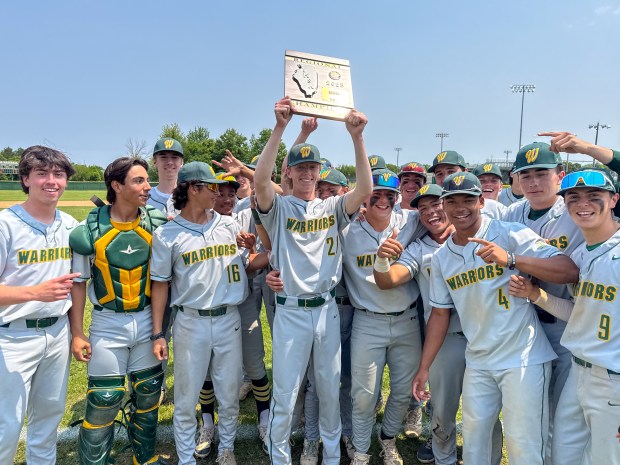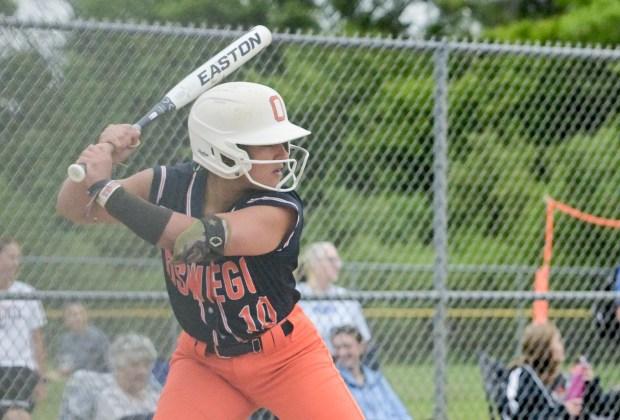As I watched my 14-year-old grandson playing baseball with his youth travel team Wednesday evening on Aurora University’s beautiful field, I looked around at all the other bustling diamonds in this section of the Fox Valley Park District’s Stuart Sports Complex and thanked the heavens for making the game part of my life.
Baseball really is America’s sport. More specifically, baseball and softball have huge legacies in this area. So on Thursday, when I found out the Aurora Historical Society will be featuring the exhibit “Play Ball, Aurora!” at its museum at 20 E. Downer Place starting June 6 at downtown’s First Fridays event, I gave Executive Director John Jaros a call to find out a little more about the deep roots baseball and softball have here in our community.
Jaros told me this exhibit is similar to the popular display that ran through the summer of 2014, featuring photos, trophies, uniforms and other memorabilia from “old-timers who played the game” back in the day when both baseball and particularly fast-pitch softball really did rule.
“A lot of good material came into the collection at that time … including Aurora’s 1959 World Softball Championship Trophy,” said Jaros.
It was 65 years ago in September of 1959, according to the Aurora Historical Society, that the Aurora Sealmasters, a fast-pitch softball team sponsored by Stephens-Adamson Company, made history by winning the Amateur Softball Association National Tournament. (At the time, it was the World Softball Championship).
Aurora pitcher Harvey “The Horse” Sterkel – who had been recruited from Denver after Stephens-Adamson decided to get serious about the game – dominated this Florida tournament, winning eight of the team’s nine games, including pitching three shutouts on the final day of the tournament.
Sealmasters would go on to win Amateur Softball Association championships again in 1961, 1965 and 1967, and would win the first International Softball Federation World Tournament in 1966 and ‘68. Sterkel himself would dominate for a good 20 years, earning a well-deserved spot in two major softball Halls of Fame. And as I found out while writing this column, one of the fields in the Stuart Sports Complex on Jericho Road where I watched by grandson play this week is named in his honor.
Aurora’s winning ways in softball continued into the 1970s, culminating with a win at the international Softball Congress World Tournament in 1980. Under Dolan & Murphy Real Estate, which took over sponsorship in 1988, Aurora continues to field men’s and women’s teams, and according to its website, has qualified for and played in the world tournament since 1994 – a record – finishing as high as second in 2012.
While some of those championship players are still with us, Jaros noted, many have died, including the legendary Sterkel, who passed away in 2019.
“We wanted to pay tribute to those who are still around,” he said, adding that the decision to reintroduce the exhibit is also because “it was very popular … the sport is big in Aurora.”
Baseball in this community actually dates back to the 1870s, with the city being home to some minor league teams back in the early days including the Aurora Blues, whose roster in 1911 included the legendary Casey Stengel. By 1912, Stengel was in the majors playing for Brooklyn.
The number of amateur baseball teams grew in the 1930s and ’40s as more city and neighborhood leagues formed. And it became even more popular in the 1950s as youth leagues came into existence.
“Back then everybody played ball,” said Jaros, noting that Aurora also had several semi-pro teams. “Baseball really was America’s pastime.”
It was in the 1930s, he added, that softball – originally called “diamond ball” – came into prominence in Aurora, with two men’s recreational leagues: The Industrial League – “every factory had a team” – and the Protestant Church League. But the sport here was far different then what Jaros grew up playing, with big 16-inch softballs and no gloves, in his North Side Chicago neighborhood.
“When I came to Aurora (in 1984), they told me this was a big softball place,” he said. “I loved softball but when I saw how they played, throwing really hard with a smaller ball and they all had gloves, I thought, this is not how I played.”
While Jaros never participated in any Aurora fast-pitch games, he never lost his appreciation for the sport or the special spot it holds in this city’s story.
“We have a lot of cool material that comes in and out of storage,” Jaros said. “We just felt this was a good time to bring it out again.”
dcrosby@tribpub.com





